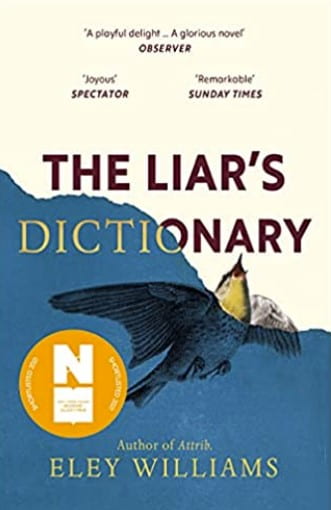What a wonderful book full of wit, words, puns, etymology and play. I loved it.
I fell in love with it when I was reading the preface, where it asked the question about the difference between prologue and preface (answers at the end if needed), and described different types of readers of dictionaries.
Are you a browser?
. . . someone who browses a dictionary not as a reader but as a grazing animal and spends hours nose-deep in the grass and forbs of its pages, buried in its meadow while losing sight of the sun. I recommend it. Browsing is good for you. You can grow giddy with the words , shapes and sounds, their corymbs, their umbels and their panicles.
p5
Or perhaps you are a swimmer.
But haven’t we all had a private moment of pleasure when reading a dictionary? Just dipping, come on in, the water’s lovely type of pleasure, submerging only if something takes hold of your toe and will not unbite.
p7
But perhaps the greatest idea is
. . . a dictionary might be like reading a map or looking in a mirror.
p71
Of course it is because we look up those things that are relevant to us and if they were recorded somewhere they would be a map of our not-understandings, our blanks but also our interests.
The book is structured into chapters each starting with a letter of the alphabet, e.g. K is for kelemenopy (n.) , yes I did have to look that word up, which means a straight line through the middle of everything that leads nowhere. The chapter is about the main character, looking through cards of words for the dictionary written in Victorian times trying to find the false words. Someone had slipped words that were not real into the dictionary, they are called mountweazels, and they had to be rooted out. So, in the midst of this swirling sea of words, there is a plot.
We get a dual-voiced narrative. Two lexicographers set 100 years apart are working on the dictionary. Winceworth, a name totally suitable to the character, works in 1899 alongside other lexicographers but is often brushed aside and left out. 100 years later we have Mallory working as a lone employee of the Swansby Dictionary, one that was never finished, but is now being digitised. This is when the mountweazels are found. The book is a love story, a mystery, where are these words and who put them there and who keeps making threatening phone calls to the office in the present time. It is also a little slice of Victoriana very well described.
Somehow the plot seems secondary to the words and word play but I don’t think this is a negative. There are lists of words, particularly colour
Yellow and red and amber, apricolt, auburn, aurelian, brass, cantaloupe, carrot, cinnabar, citric, coccinate, copper, coral, embered, flammid, fulvous, gilt, ginger, hennaed, hessonite, honeyed, laharacish, marigold, marmaladled, mimolette, ochraceous, orang-utan, parikash, pumpkin, rubedinous, ruddy, rufulous, russet, rusty, saffron, sandy, sanguine, spessartite, tangerine, tawny, tigrine, Titian, topazine, vermilion, Voytak, xanthosiderite –
p232
Go on, admit it. There are some words in that list you don’t know what they are although you might be able to make a good guess.
I didn’t want it to end but it did so I have reserved William’s first book Attrib. at the library.
Answers to the question posed to the reader.
A preface is an introduction to the book by the author and a prologue is the start of the story from a character or narrator’s point of view and often sets the context for what is to follow. A foreword comes before both of these and is a commentary/critique written by someone else. If I have this wrong, let me know.
If you liked this book, you might like The Dictionary of Lost Words by Pip Williams.
